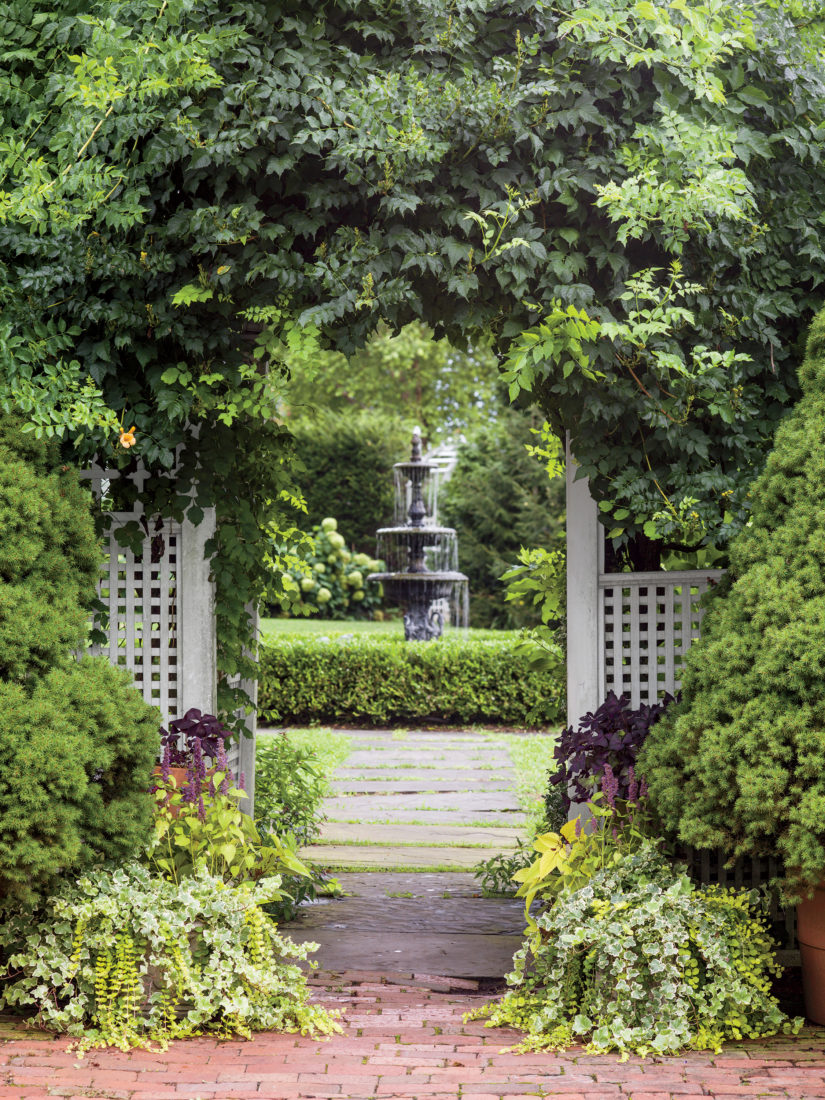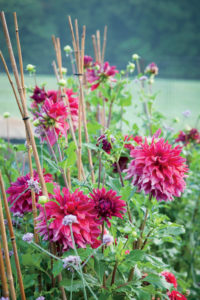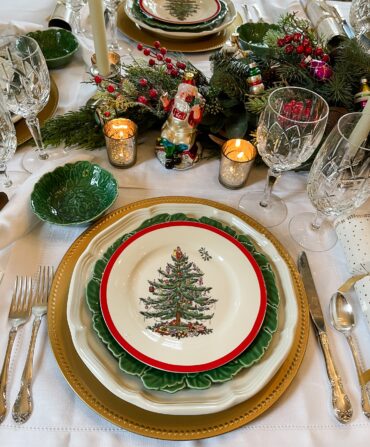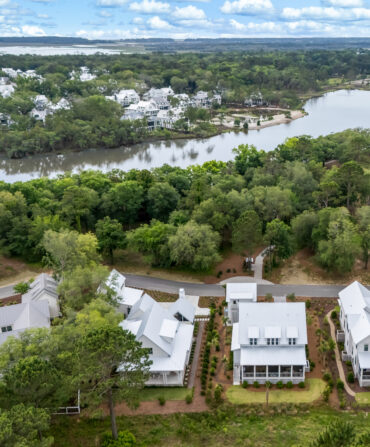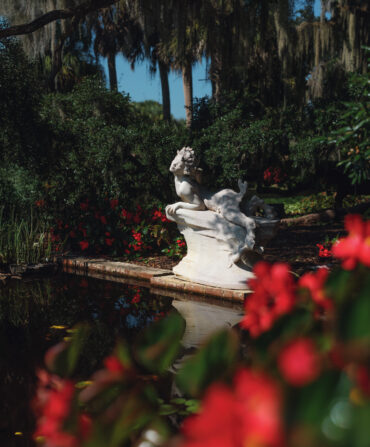Behind their house on Halcyon Farm, a rambling 130-acre tract twenty minutes north of Baltimore. As a child in the 1950s, he would open a white wooden gate to help her pick everything from fall squash to July blackberries. In spring, he just rambled through it barefoot. “I used to run along a grass path between two sixty-foot rows of asparagus,” he recalls.
Her victory garden was part of a patriotic movement, generally forgotten today, to prevent food shortages during both world wars, when the U.S. Department of Agriculture published basic gardening pamphlets to encourage Americans to supplement food rations with fresh-grown fruits and vegetables. Just like Colwill’s mother, people across the country planted and raised their own produce on farms, at schools, and in suburban backyards and urban window boxes. “We grew every vegetable you can imagine, and some fruit varieties, and we kept a cow for milk and butter,” Colwill says of their contribution to the movement that by May 1943 had engendered eighteen million gardens producing a third of the country’s essential fresh food.
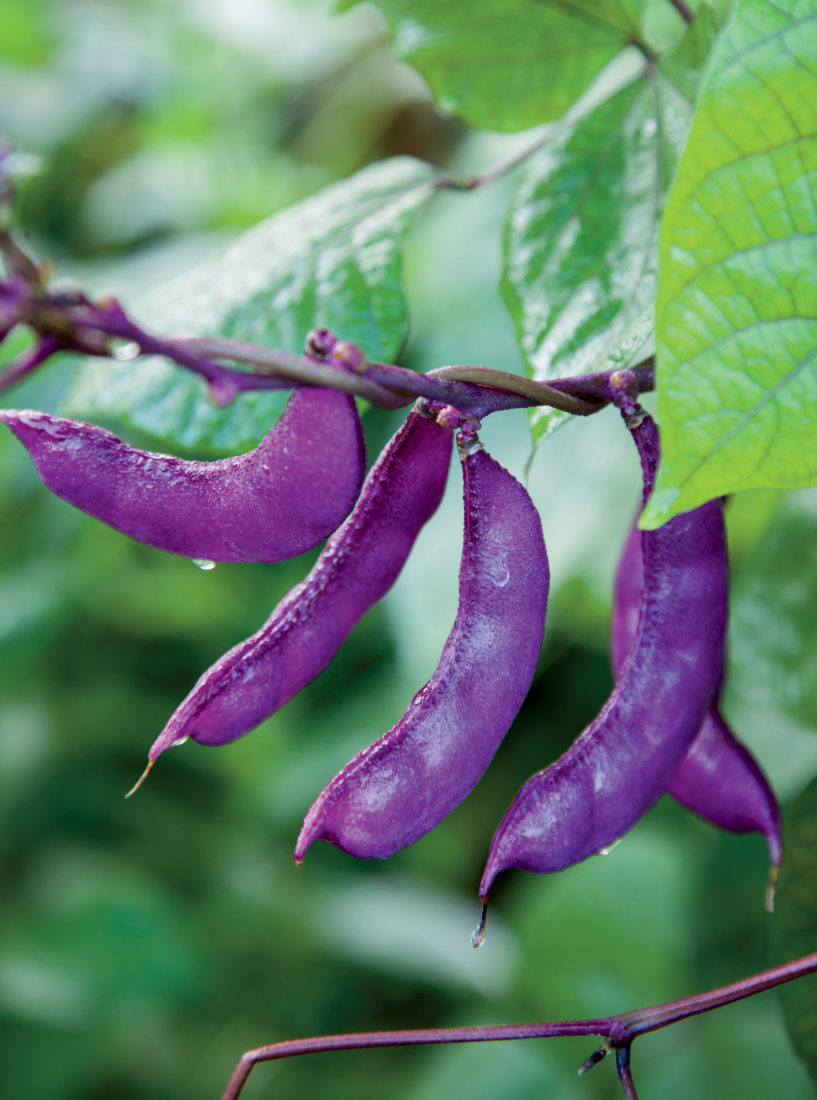
Photo: Helen Norman
Hyacinth beans.
Colwill’s attachment to the farm drew him back to it periodically through college and graduate school. As time passed, his mother stopped actively gardening, and the victory plot went fallow. When his parents died, in 1988, he inherited the farm. Shortly after, he met his now husband, Jonathan Gargiulo, who’d grown up tending vegetables in New Jersey, and they eventually opened a shop, Halcyon House Antiques, on an adjacent property. “A single peony bed and his mother’s defunct victory garden were the only gardens on the farm when we met,” Gargiulo says.

Photo: Helen Norman
Zinnias and kale in the vegetable garden
One spring Saturday, the two visited the Ladew Topiary Gardens in nearby Monkton, where in the 1930s an amateur gardener, Harvey Ladew, began building a series of themed rooms and allées that now flow across twenty-two of the property’s more than two hundred country acres. They returned to Halcyon Farm ignited by the idea of making a similar series of sequestered gardens. “Stiles’s farm had the same forested backdrop,” Gargiulo says. “It’s the best perspective in the world for a garden room.”
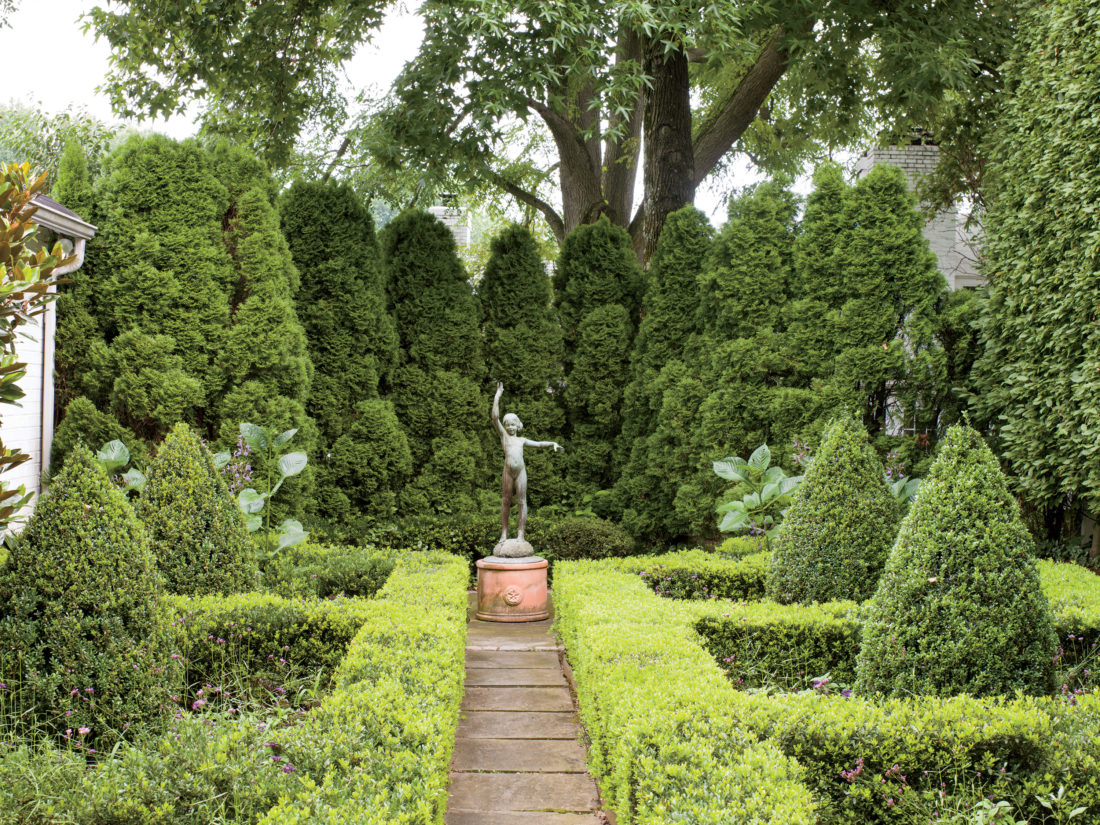
Photo: Helen Norman
Boxwood topiaries surround a statue.
First, they staked lines of string behind the victory garden’s old wooden gate to demarcate quadrants for a large flower parterre that would serve as a cutting garden. “It was an experiment in how much we could handle,” Colwill says. They stocked the space with tall season-long repeat bloomers—Dinnerplate dahlias form borders around Oklahoma Mix zinnias and leggier Nicotiana sylvestris. Forsythia sage is a favorite, too. “It grows very tall with woody stems that add architectural structure to airier foreground flowers like Queen Anne’s lace and cosmos,” Colwill says. In summer, Gargiu-
lo turns on music in the kitchen and sorts through a half dozen containers full of flowers to create arrangements for every single room of the house.

Photo: Helen Norman
The cutting garden, with its profusion of hydrangeas and Russian sage.
That successful experiment led to others. Colwill backfilled the ground adjacent to his mother’s victory garden with sixty truckloads of soil for a room with a smooth green lawn surrounded by a stone wall. He sized it to fit the exact dimensions of a party tent. “I knew we’d use it in all weather,” he says. The simplicity provides a visual break between other densely planted areas.
Gargiulo found a three-tiered Victorian-style fountain to place midway between the house and other areas of the garden, creating a room around it planted with colorful coleus and barberry shrubs while the pair continued their horticultural research. “We read as we went,” Gargiulo says. “Books by the masters of English gardening—Penelope Hobhouse, Rosemary Verey, and Russell Page.” Next the duo installed hedges and arbors to connect newly planted spots. Then they pushed back a lower pasture fence to create space for a garden room that brought the whole project full circle: a plot planted with all manner of Southern summer vegetables, from pole beans and cucumbers to onions and tomatoes.
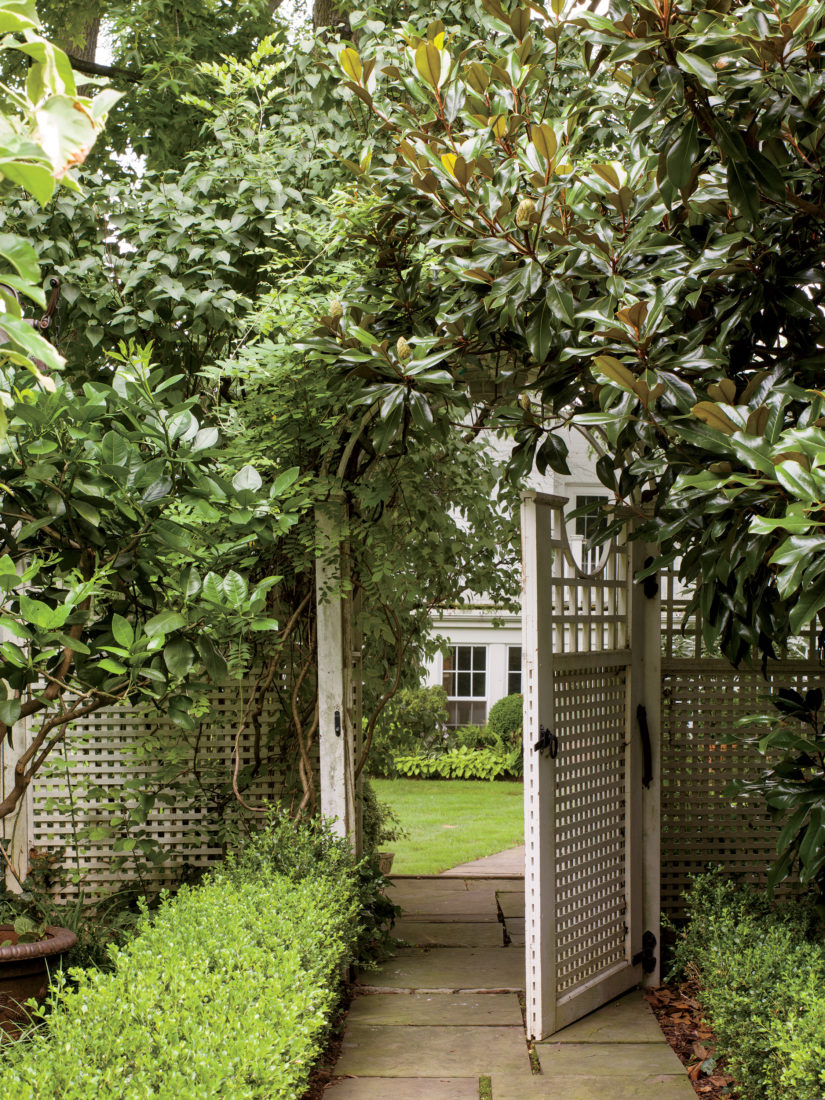
Photo: Helen Norman
A doorway between garden rooms.
Today the garden spans four interconnected garden rooms, each adorned with potted trees, benches, and antique urns. “It’s taken twenty-seven years and a lot of imagination to build upon each garden and create the whole,” Colwill says. The joy he and Gargiulo take in their flowers, fruits, and vegetables is enduring. “In our nineties,” Colwill says, “we may be sitting in lawn chairs, but we’ll be directing what’s next in the garden.”


